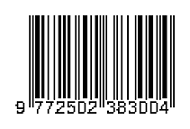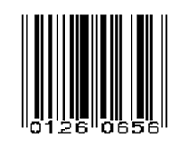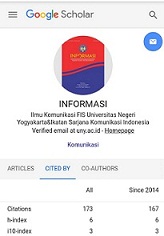The commodification of economic perspectives in Islamic Religious Education Studies on social media
DOI:
https://doi.org/10.21831/informasi.v51i1.38516Keywords:
Economic Empowerment, Islamic Economics, New MediaAbstract
Economic empowerment in Indonesia is quite dynamically developing, this is also not free from the study of Islamic religious education on Islamic economics. Apart from this, researchers also used YouTube social media for review in this study. The formulation of the research problem is how to commodify an economic perspective in the study of Islamic religious education on social media. This study aims to analyze the commodification of economic perspectives in the study of Islamic religious education on social media. Researchers use a quantitative approach with a survey method where data will be taken from a predetermined population and sample and then a questionnaire to the respondent. The results of this study indicate that the commodification of YouTube content about the economy packaged in Islamic Religious Education affects the attitudes of YouTube users who watch the content. This is evidenced by conducting a regression test with the results that all ha received and accepted are declared good. In addition, economic empowerment in the perspective of Islamic religious education can also increase community economic empowerment and support the economic activities of the Indonesian people.
References
Amarasekara, I., & Grant, W. J. (2019). Exploring the YouTube science communication gender gap: A sentiment analysis. Public Understanding of Science, 28(1), 68–84. https://doi.org/10.1177/0963662518786654
Ashidiqi, M. N. A., Rohmatiah, A., & Rahmah, F. A. (2019). YouTube free Quran education as a source of Islamic education learning materials and media. Khalifa: Journal of Islamic Education, 3(2), 126-141. Retrieved from http://kjie.ppj.unp.ac.id/index.php/kjie/article/view/27
Baihaqi, A., Mufarroha, A., & Imani, A. I. T. (2020). Youtube sebagai media pembelajaran Pendidikan Agama Islam efektif di SMK Nurul Yaqin Sampang. EDUSIANA: Jurnal Manajemen Dan Pendidikan Islam, 7(1), 74- 88. Retrieved from http://journal.stainim.ac.id/index.php/edusiana/ article/view/19
David, E. R., Sondakh, M., & Harilama, S. (2017). Pengaruh konten vlog dalam YouTube terhadap pembentukan sikap mahasiswa ilmu komunikasi Fakultas Ilmu Sosial dan Politik Universitas Sam Ratulangi. Acta Diurna Komunikasi, 6(1). Retrieved from https://ejournal.unsrat.ac.id/index. php/actadiurnakomunikasi/article/view/15479
Eddy, Usman, A., & Dafitri, H. (2019). Peluang industri kreatif melalui pelatihan pembuatan video kreatif bagi mahasiswa Akademi Dakwah Indonesia Sumatera Utara. Jtunas, 1(1), 39. https://doi.org/10.30645/ jtunas.v1i1.11
Faiqah, F., Nadjib, M., & Amir, A. S. (2015). YouTube sebagai sarana komunikasi bagi komunitas Makassar vidgram. Jurnal Komunikasi KAREBA, 16(1), 28–42. https://doi.org/10.1080/14639947.2015.1006801
Garrett, N. (2016). Mapping self-guided learners' searches for video tutorials on YouTube. Journal of Educational Technology Systems, 44(3), 319–331. https://doi.org/10.1177/0047239515615851
Irwandani, I., Iqbal, M., & Latifah, S. (2019). Pengembangan video blog (Vlog) channel YouTube dengan pendekatan stem sebagai media alternatif pembelajaran daring. Inovasi Pembangunan : Jurnal Kelitbangan, 7(2), 135. https://doi.org/10.35450/jip.v7i2.140
Kamhar, M. Y., & Lestari, E. (2019). Pemanfaat sosial media YouTube sebagai media pembelajaran Bahasa Indonesia di perguruan tinggi. INTELIGENSI: Jurnal Ilmu Pendidikan, 1(2), 1–7. https://doi.org/10.33366/ilg.v1i2.1356
Lestari, R. (2013). Penggunaan YouTube sebagai media pembelajaran Bahasa Inggris. Seminar Nasional Kedua Pendidikan Berkemajuan Dan Menggembirakan (The Second Progressive and Fun Education Seminar), 607–612. Retrieved from https://publikasiilmiah.ums.ac.id/handle/11617/9566
Madathil, K. C., Rivera-Rodriguez, A. J., Greenstein, J. S., & Gramopadhye, A. K. (2015). Healthcare information on YouTube: A systematic review. Health Informatics Journal, 21(3), 173–194. https://doi. org/10.1177/1460458213512220
Mosemghvdlishvili, L., & Jansz, J. (2013). Framing and praising Allah on YouTube: Exploring user-created videos about Islam and the motivations for producing them. New Media and Society, 15(4), 482–500. https://doi. org/10.1177/1461444812457326
Neuman, W. L. (2014). Social research methods: Qualitative and quantitative approaches (7th ed.). Pearson Education Limited.
Payne, N. J., Campbell, C., Bal, A. S., & Piercy, N. (2011). Placing a hand in the fire: Assessing the impact of a YouTube experiential learning project on viral marketing knowledge acquisition. Journal of Marketing Education, 33(2), 204–216. https://doi.org/10.1177/0273475311410853
Pratiwi, B., & Puspito Hapsari, K. (2020). Analisis kemampuan berpikir tingkat tinggi melalui pemanfaatan YouTube sebagai media pembelajaran Bahasa Indonesia. Jurnal Ilmiah Sekolah Dasar, 4(2), 282. https://doi. org/10.23887/jisd.v4i2.24238
Quennerstedt, M., Flintoff, A., & Webb, L. (2013). Narratives from YouTube: Juxtaposing stories about physical education. SAGE Open, 3(4). https:// doi.org/10.1177/2158244013507266
Rahman, S. R. A., & Adam, F. (2015). Kredibiliti YouTube sebagai medium pembelajaran agama dalam peradaban Islam kontemporari. Proceedings of ICIC2015 - International Conference on Empowering Islamic Civilization in the 21st Century, September, 593–599.
Rahmawan, D., Mahameruaji, J. N., & Janitra, P. A. (2018). Potensi YouTube sebagai media edukasi bagi anak muda. Edulib: Journal of Library and Information Science, 8(1), 81–98. https://doi.org/10.17509/edulib. v8i1.11267
Sari, L. (2020). Upaya menaikkan kualitas pendidikan dengan pemanfaatan YouTube sebagai media ajar pada masa pandemi Covid-19. Jurnal Tawadhu, 4(1), 1074-1084. Retrieved from https://ejournal.iaiig.ac.id/ index.php/TWD/article/view/226
Smith, R., & Secoy, J. (2019). Exploring the music identity development of elementary education majors using ukulele and YouTube. Journal of Music Teacher Education, 29(1), 71–85. https://doi. org/10.1177/1057083719871026
Suwarno, M. (2017). Potensi YouTube sebagai sumber belajar Matematika. Pi: Mathematics Education Journal, 1(1), 1–7. https://doi.org/10.21067/pmej. v1i1.1989
Ulya, H. (2019). Komudifikasi pekerja pada YouTube pemula dan underrated (Studi kasus YouTube Indonesia). Interaksi: Jurnal Ilmu Komunikasi, 8(2), 1. https://doi.org/10.14710/interaksi.8.2.1-12
Utaminingrum, K. A. (2015). YouTube sebagai media pembelajaran budaya Korea Selatan (Studi kasus pada anggota komunitas Cover Dance Soulmate Community) (Doctoral dissertation, Bakrie University). Retrieved from https://www.neliti.com/publications/253939/youtube-sebagai-media- pembelajaran-budaya-korea-selatan-studi-kasus-pada-anggota
Welbourne, D. J., & Grant, W. J. (2016). Science communication on YouTube: Factors that affect channel and video popularity. Public Understanding of Science, 25(6), 706–718. https://doi.org/10.1177/0963662515572068
Downloads
Published
Issue
Section
License
Authors who publish with this journal agree to the following terms:- Authors retain copyright and grant the journal right of first publication with the work simultaneously licensed under a Creative Commons Attribution License that allows others to share the work with an acknowledgement of the work's authorship and initial publication in this journal.
- Authors are able to enter into separate, additional contractual arrangements for the non-exclusive distribution of the journal's published version of the work (e.g., post it to an institutional repository or publish it in a book), with an acknowledgement of its initial publication in this journal.
- Authors are permitted and encouraged to post their work online (e.g., in institutional repositories or on their website) prior to and during the submission process, as it can lead to productive exchanges, as well as earlier and greater citation of published work (See The Effect of Open Access).





















